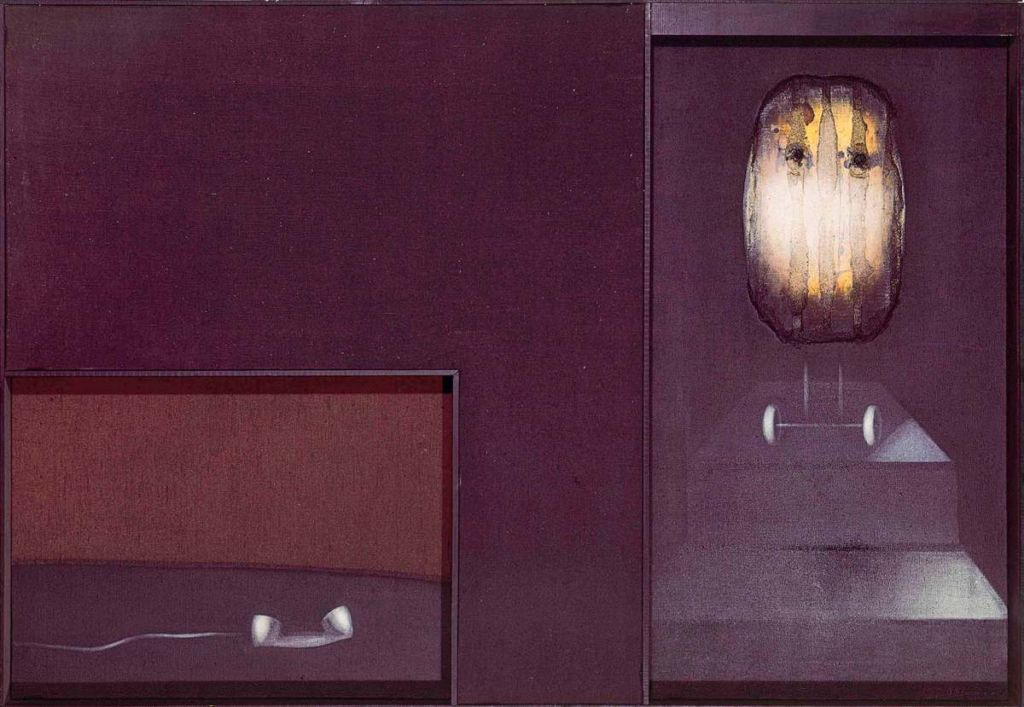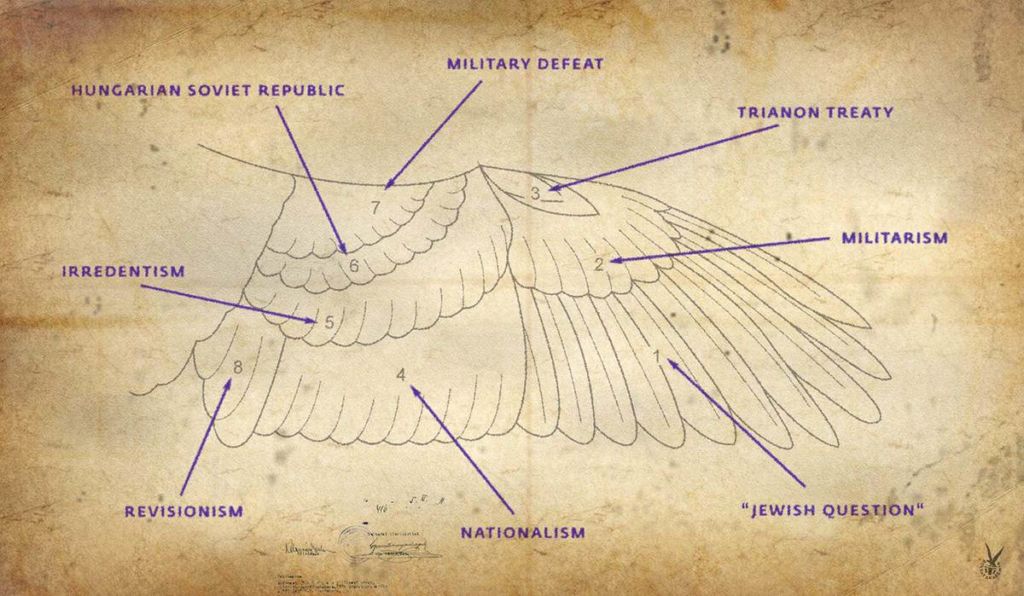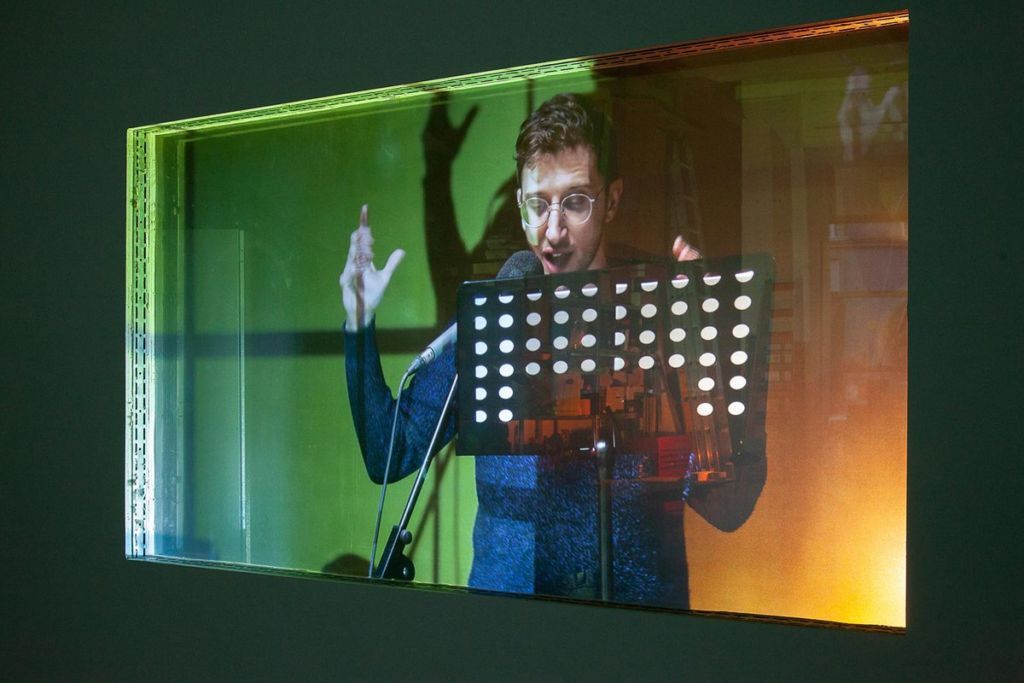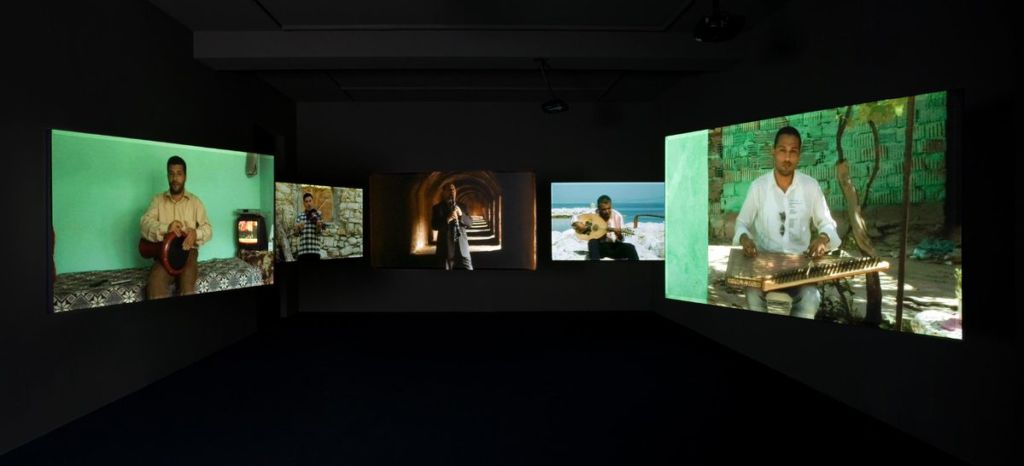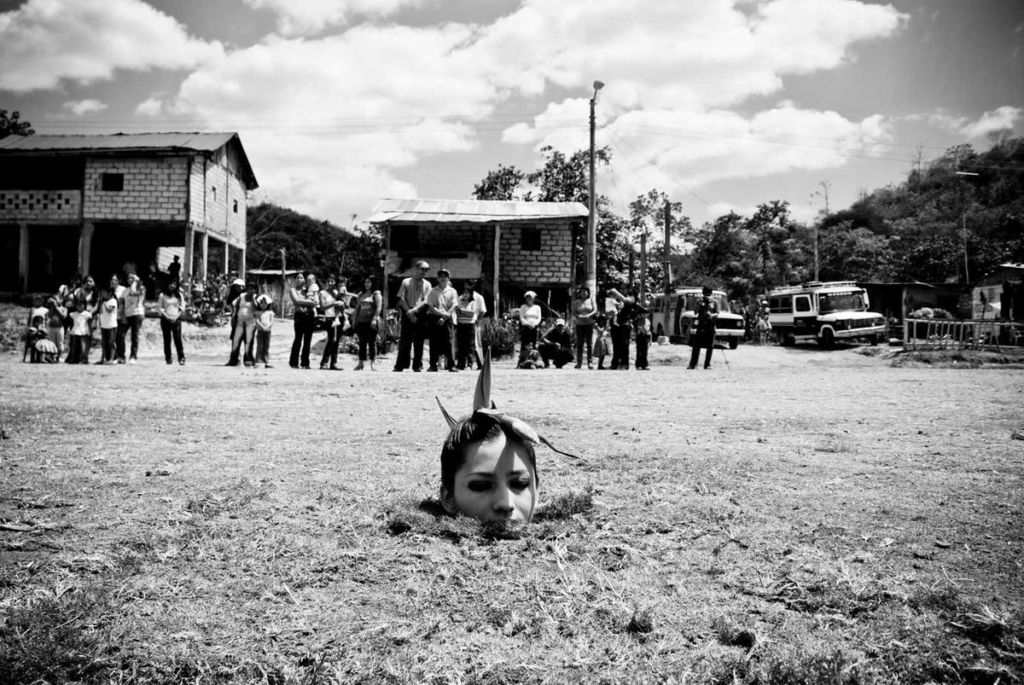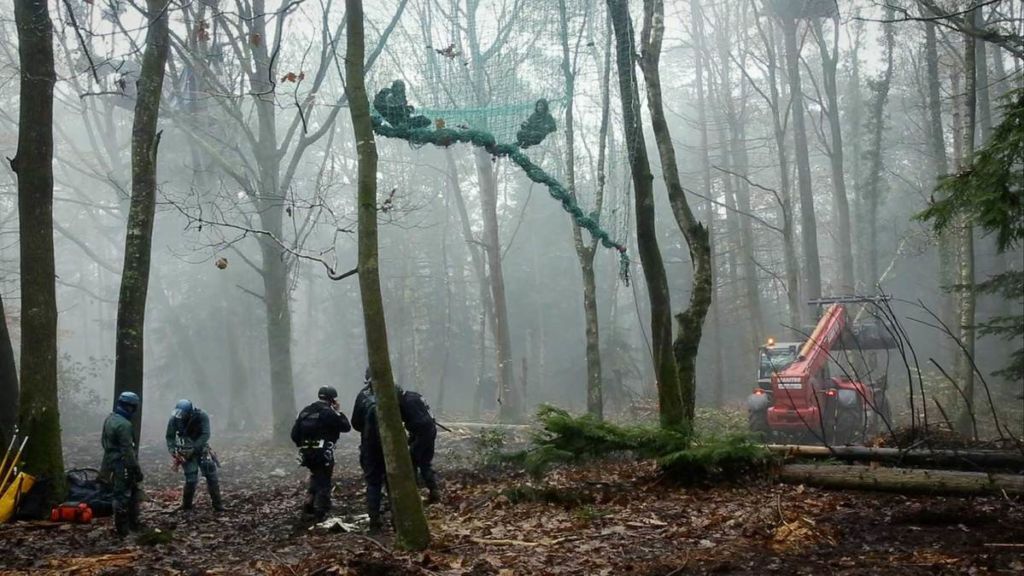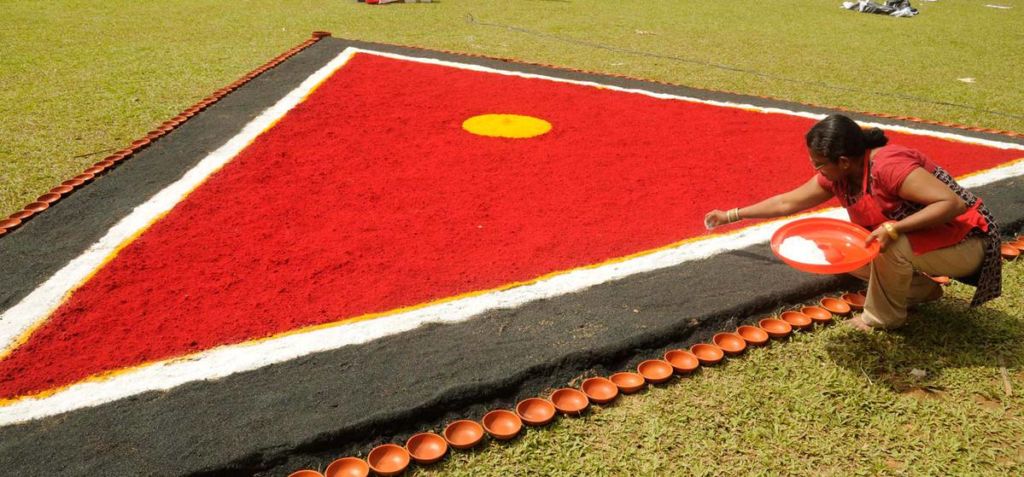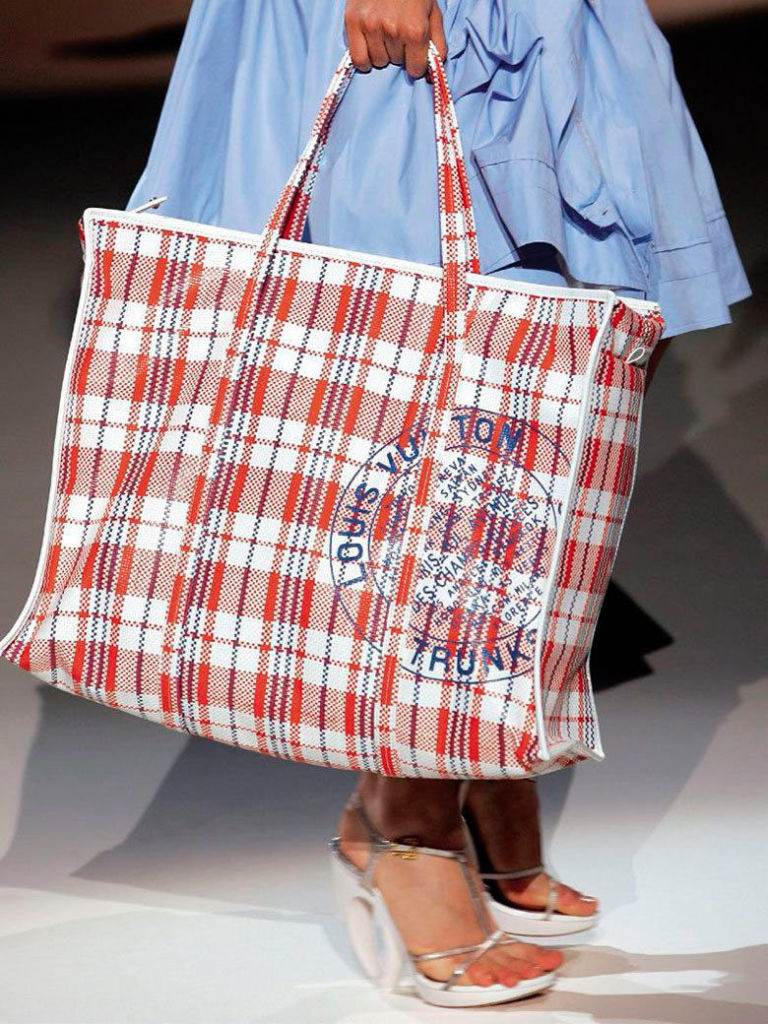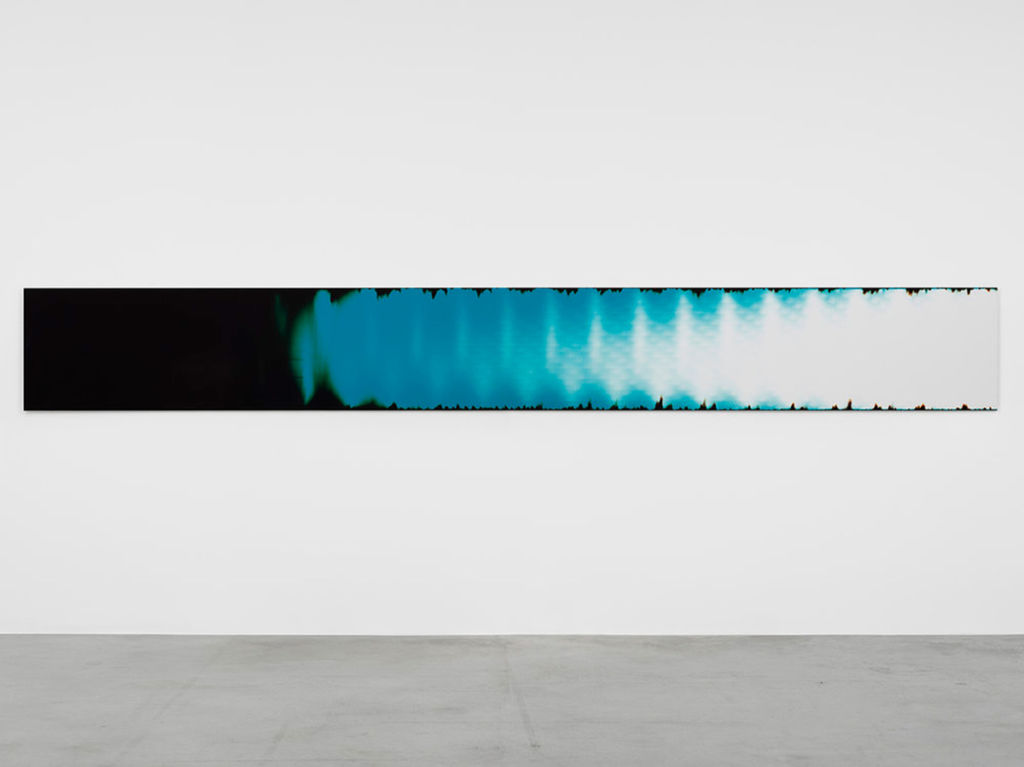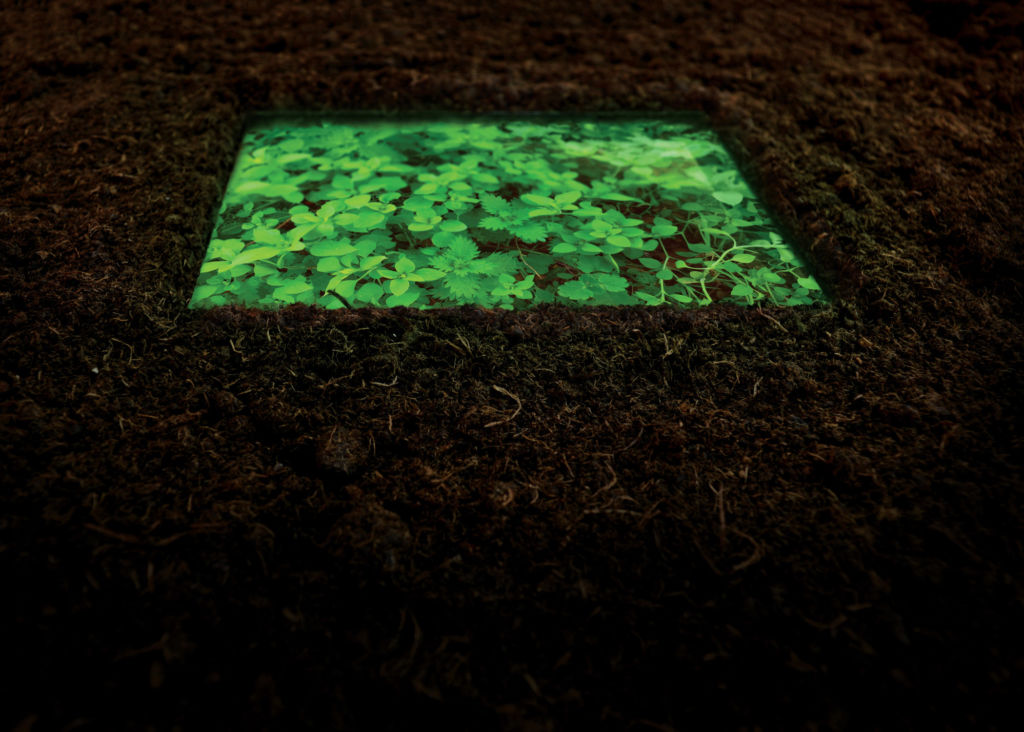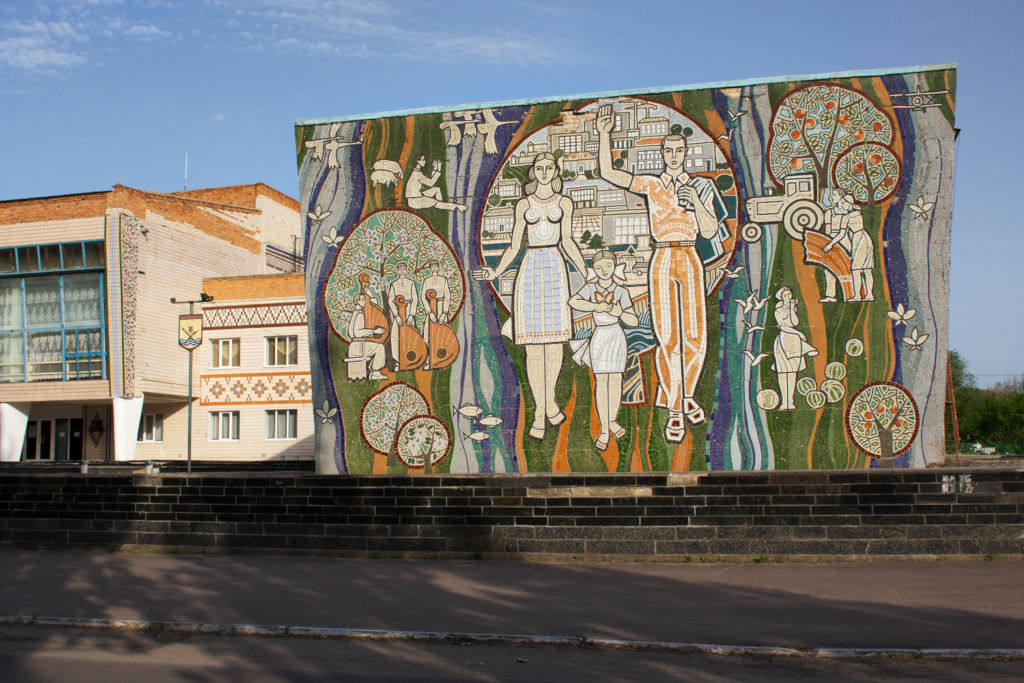Homage to Machado, John Bernard Myers and Spanish Refugee Aid, Inc. The Chronicle of a Tribute to a Refugee
Investigation par María Luisa Grau Tello
Today, at a time when the world is facing a refugee crisis handled ineffectively by governments yet tackled by citizen-led interventions, this article recollects Homage to Machado, an art exhibition held in New York in 1966, organised by John Bernard Myers, gallery owner, and Spanish Refugee Aid, Inc., an NGO founded by Nancy Macdonald in 1953. Conceived as a tribute to Antonio Machado, a Spanish poet who died exiled in France, the exhibition sought to raise funds to support the SRA’s projects helping Spanish refugees settled in France as well as to denounce the lack of freedom under Franco’s dictatorship.
Isidro López Aparicio, Arte político y compromiso social. El Arte como transformación creativa de conflictos (Murcia: CENDEAC, 2016).
Jesús Rubio Jiménez, La herencia de Antonio Machado (1939–1970) (Zaragoza: Prensas de la Universidad de Zaragoza, 2018).
John Bernard Myers, “Spain’s Persecution of Artists,” The New York Times, 5 May 1966.
Letter dated 8 March 1966 written by J.B. Myers to Paul Mocsanyi, the Director of The New School Art Center. Archive of the Spanish Refugee Aid. Box 161, folder 37. Tamiment Library and Robert F. Wagner Labor Archives (New York University).
Nancy Macdonald, Homage to the Spanish Exiles. Voices from the Spanish Civil War (New York: Insight Books. Human Science Press, 1987).
This statement appeared in a 1959 pamphlet published by Spanish Refugee Aid, Inc. and was kept in its circulars for ten years. Ibid., 119-120.
Claude Laharie , Gurs: 1939-1945. Un camp d’internement en Béarn (Biarritz: Atlantica, 2005).
John Bernard Myers, Tracking the marvellous. A life in the New York Art World (New York: Random House, 1983).
Archive of the Spanish Refugee Aid. Box 161, folder 37. Tamiment Library and Robert F. Wagner Labor Archives (New York University).
Letter dated 20 April 1966 written by J. B. Myers to Juana Mordó. Tibor de Nagy Gallery files. Box 11, folder 2. Archives of American Art, Smithsonian Institution.
Letter dated 23 March 1966 written by Fernando Zóbel to J. B. Myers. Tibor de Nagy Gallery files. Box 11, folder 2. Archives of American Art, Smithsonian Institution.
Tibor de Nagy Gallery files. Box 11, folder 2. Archives of American Art, Smithsonian Institution.
Archive of the Spanish Refugee Aid. Box 161, folder 37. Tamiment Library and Robert F. Wagner Labor Archives (New York University).
The global refugee crisis is one of the issues that marked the early 21st century. According to the UNHCR’s 2018 report, there were almost 26 million refugees globally in 2018, with four out of five fleeing to neighbouring nations. Consequently, developing countries, already struggling with their own difficulties, are hosting a large portion of displaced people. Germany is the only Western country to be among the top ten receiving countries. Mainly as a reaction to governmental inactivity, some sectors of civil society have responded by organising humanitarian projects aiming to improve the living conditions of people who have been forced to leave their home countries. Such projects have taken on a variety of forms, many being centred around creativity. Art, in this context, is a tool for social commitment, seeking to bring about change in different social settings.1
Many of these projects have led to the creation of community art programmes in refugee camps, manifesting in the form of murals and workshops addressing issues the refugees are facing. One such project has been led by Joel Artista in the Syrian refugee camps of Za’atari and Azraq in Jordan, another being the programs led by the organisation aptART. Some other important, yet completely different activity, takes place each year in the refugee camps of the Sahrawi people exiled in Algeria: ARTifariti—an international gathering focused on the relationship between art and human rights. In this yearly meeting, artists from the international scene are brought together to live alongside the refugees, learning about their problems and creating works of art that reflect on human rights. Another humanitarian art-based project was developed by the UNHCR which launched Art Stands with Refugees at the international Art Basel art fair in 2019, alongside other refugee-centred art projects in collaboration with artists such as Tania Bruguera, Miriam Cahn and Alfredo Jaar, to name just a few. An auction was held after the fair to sell off the works created specifically for the event itself and the pieces donated by artists. The proceeds of the auction went to finance a work inclusion programme for women refugees. A similar initiative also took place in January 2020: The Hope Project, a London-based exhibition of paintings by Syrians living in the Moria refugee camp, Greece. Their works were later auctioned off at Christie’s.
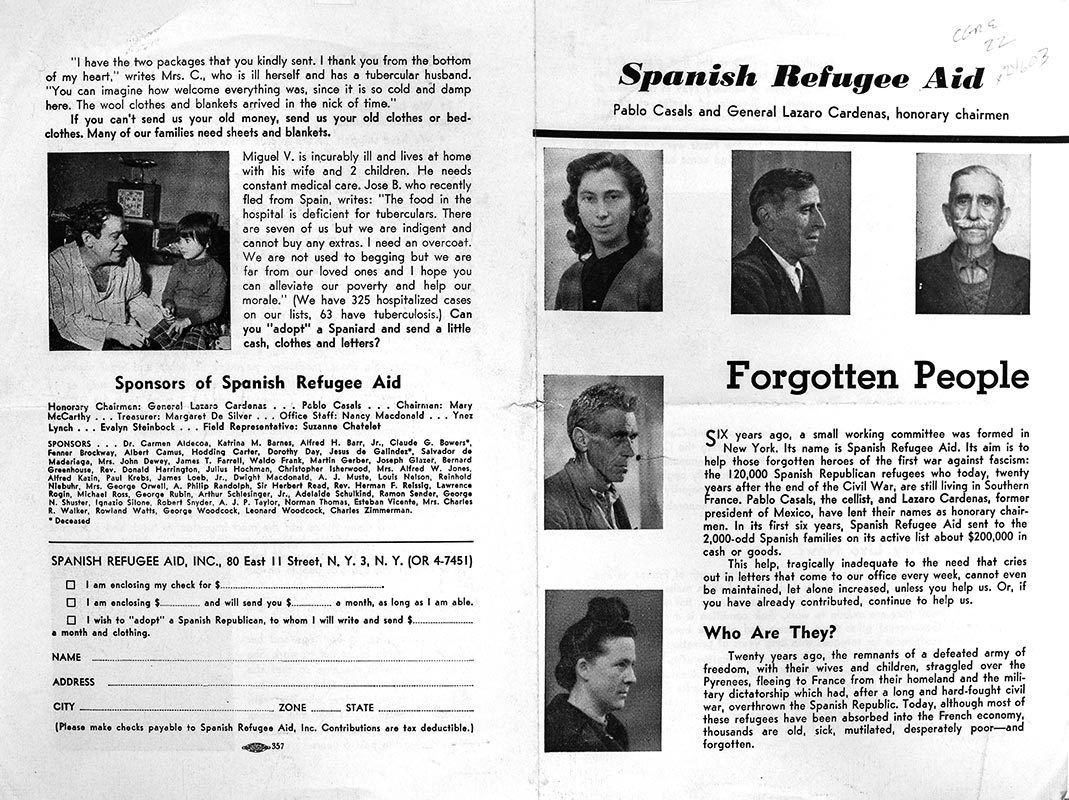
Information folder from the Spanish Refugee Aid Inc.
These are just some examples of the different ways the visual arts are an integral part of many humanitarian projects aiming to mitigate the situations faced by refugees. The main difference between them is the way of understanding and bringing about improvements to their living conditions. In certain cases, direct work with refugees is preferred in camps or cities where they have settled and in which artistic creation is understood as a tool for expression enabling the visualisation of a problem, the development of a sense of community within a situation of alienation, an encounter with other sectors of society and improvement in the environmental conditions of the camps where they live, among other questions. The most habitual and conventional initiatives related to the art market, focusing on fundraising, are very different; direct work with refugees does not typically take place in these cases. The players involved in different actions also vary. In some cases, large multinational organisations, such as UNHCR or UNICEF, have been the driving force behind them; in others, it has been individual artists with a social leaning who have initiated these projects and garnered support from NGOs and other international organisations. Finally, most of these projects are of a humanitarian nature and not associated with giving a clear political statement (the exception within the examples provided would be ARTifariti).
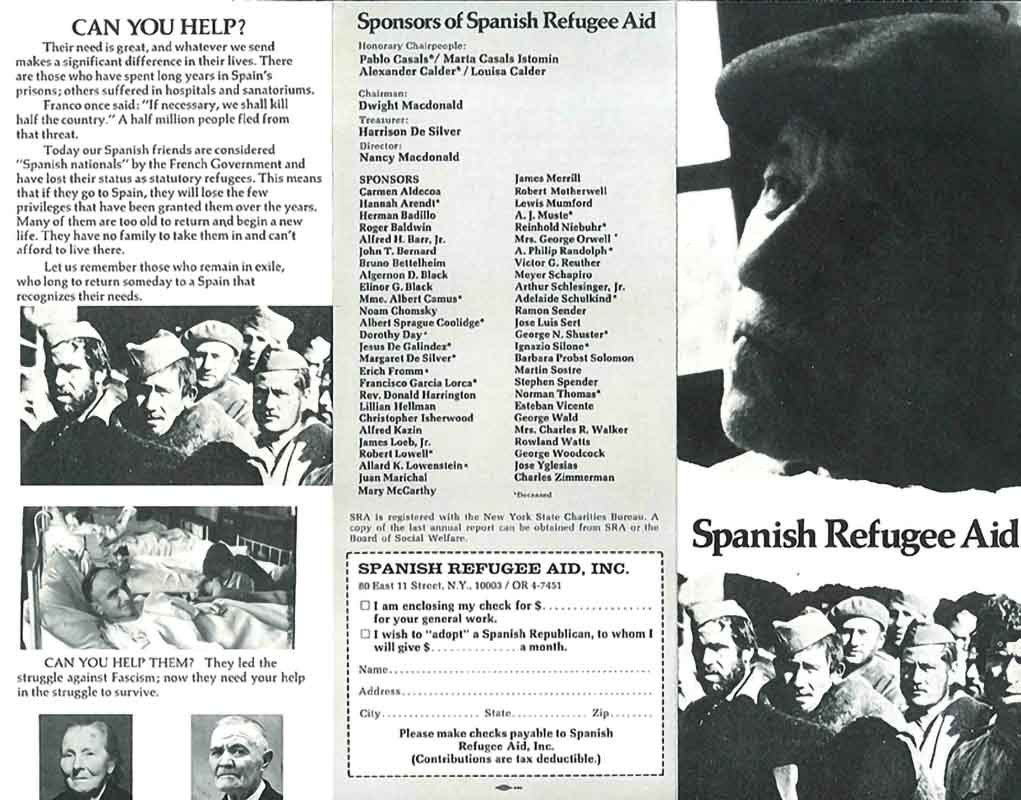
Information folder from the Spanish Refugee Aid Inc.
In the same way that the refugee crisis in itself is not something new, neither are such initiatives. In fact, the 20th century bore witness to some major global population crises, with people being forced to leave their countries as a result of wars. It also saw the first cases whereby groups of citizens banded together to provide aid with participation from the field of culture. One such example was Homage to Machado, an exhibition held in New York in April 1966 by the gallery owner John Bernard Myers and Spanish Refugee Aid, Inc. (SRA), with the collaboration of leading Spanish artists and some of the most important art galleries from the city. Besides the most obvious aim, to raise money to fund SRA-assisted projects for Spanish refugees settled in France, there was a clear ideological intention caused by the political context in Spain. More specifically, the exhibition sought to pay homage to the Spanish poet Antonio Machado who died in exile in Collioure, France, in 1939, and to condemn the repression of liberties in Spain. Homage to Machado was a clear demonstration of the commitment shown by leading artists and intellectuals on the international scene, at a time when the people of Spain were the refugees seeking a brighter future.
On How Homage was Paid in the United States to a Spanish Poet Who Died in Exile in France
We are in the final days of January 1939, and hundreds of thousands of Spaniards are preparing to cross the French border. Frozen by the cruelty of war and the harsh winter, their faces and bodies mirror the physical and moral ruins of Spain following three years of bullets and bombs. This river of people is made up of the elderly and the young, urbanites and rural dwellers, labourers and intellectuals. Among them is the poet Antonio Machado, who scarcely one month later, will die in Collioure to later become a symbol of the Spanish exile.
Almost 30 years and 6,000 kilometres separate 1939 Collioure from the hustle and bustle of 1966 New York. But it is through the paradox of globalisation that they become united by events that took place in the small Spanish town of Baeza. In the middle of this unlikely geographical and temporal triangle was the memory of Antonio Machado. A large group of Spanish intellectuals, led by Jesús Vicente Chamorro, sought to pay homage to Machado2 in a series of events scheduled for 20 February 1966, on the anniversary of the poet’s death, in Baeza, where he had worked as a French teacher. This commemoration was not organised through official channels and it was financed by private donations and supported by well-known figures, such as the historian Giulio Carlo Argan, the writer Ana María Matute, the sculptor Pablo Serrano and the philosopher José Luis L. Aranguren. A poetry recital and the unveiling of a monument by Serrano and architect Fernando Ramón Moliner were to be the main events of the celebration. Hundreds of people from all over Spain gathered in the small town to take part in the memorial which didn’t took place. Franco’s regime censored the event and the armed police broke up the crowds that had gathered, arresting and presenting charges against attendees.
The reaction from the Spanish press was one of complete silence, a silence that was broken by the international media who did report on the events, which garnered considerable coverage in the United States. As well as stories appearing in newspapers with particular political leanings, news about the censorship of the events also appeared in the more mainstream press, such as The New York Times, which published a column from its correspondent in Spain and two letters to the Editor, signed respectively by the Spanish psychiatrist Manuel Manrique and by John Bernard Myers.3 What were the chances of events in Baeza receiving press attention in the big metropolis? The loudspeaker had been turned up by the press, amplifying the news arriving from Spain; the spokesperson was Myers, who was the ideologist and driving force behind this tribute-exhibition that he had christened Homage to Machado.
Myers (1920-1987), co-owner of the Tibor de Nagy Gallery in New York, poet and publisher, held strong political opinions and was particularly critical of Franco regime’s censoring of Spanish artists and thinkers. This was evident in the correspondence he privately exchanged with his peers on the art scene and publicly through his work. Homage to Machado could have ended up as just another of Myers’s many exhibitions, but he intended to ensure it had much greater repercussions. Taking into account what had happened in Baeza, he sought to convert the exhibition into an act of defence of liberties in memory of the Spanish poet as a refugee. But if he was to achieve this, his organisation would have to look outside the strictly artistic circle. He solicited institutions associated with refugees, such as the prestigious New School Art Center,4 the first one he contacted due to its earlier work defending the rights of intellectuals who had fled Europe during the rise of totalitarianism. In the end, a collaboration with this institution did not materialise, although it did put Myers in contact with an organisation that supported the cause: Spanish Refugee Aid, Inc. Its support of the project was essential in ensuring that it went beyond the parameters of being “just another exhibition” to become a humanitarian, ideological event.
Nancy Macdonald and Spanish Refugee Aid, Inc.
Through family tradition and personal convictions, Nancy Macdonald (1910-1996), born into a wealthy American family, was actively engaged in the society in which she lived. From a young age she became involved in ideological and humanitarian projects, particularly those concerned with refugees.5 Together with her husband Dwight Macdonald, she collaborated with the magazine Partisan Review and, given the situation in Europe, she created the Fund for European Writers and Artists (1940). She also played an active role in the work carried out by the Trotskyist Committee of Emergency Aid to Refugees, and the politics magazine’s Packages Abroad project, which provided sponsorship for refugees, including many Spaniards, in Europe in the aftermath of World War II.
In 1953 Macdonald decided to set up her own project and funded the Spanish Refugee Aid, Inc. (SRA), a charitable organisation providing help to exiled Spaniards by setting up and funding humanitarian projects. It had been a long time since La Retirada (The Retreat), the name given to the exodus of almost half a million Spanish people who had fled at the end of January 1939 to France, where different fates awaited them owing to the uncertainty of the European context at the time. Some were relocated across France, whereas others were deported back to Spain. The luckier ones were then able to leave for destinations such as Mexico, where the government welcomed them openly. Most, however, were subjected to inhumane living conditions in internment camps in the south of France. Many fought the Nazis alongside the French Resistance, with the unluckiest ending up in concentration camps. In 1945, after these continuous upheavals and hardships, France granted the exiled Spaniards who had settled in France the legal status of Nansen refugees. Aware of the ongoing precarious situation of many refugees, Macdonald started to provide aid through the SRA to help improve their living conditions and help secure them better futures.
Although it was a humanitarian organisation, the inevitable ideological perspective presided over how the project was defined. As the SRA was founded during the Cold War, at the height of McCarthyism and in line with the political leanings of Macdonald and the board members, the entity defined itself as an anti-communist, humanitarian organisation which dedicated its efforts towards helping non-communist Spanish refugees in France, who were mainly socialists and anarcho-syndicalists. The SRA’s anti-communist stance was clear from its membership base, which encompassed supporters of Socialism, Trotskyism and Anarchism. So as to avoid askance, the SRA made sure its ideological position was highlighted in its pamphlets and membership registration forms for those wanting to lend their support. One of its most well-known statements was:
At least 90 percent of the Spanish refugees are strong anti-Communists, with vivid memories of Communist treachery and terror during the Civil War. The tiny pro-Communist minority is cared for by the well-heeled Communist movement, but the great non-Communist majority has been shamefully neglected by the free world. Spanish Refugee Aid has been set up to help this majority.6
The SRA carried out most of its activities between the 1950s and early 1970s, setting up and running a range of programmes. Projects for the “adoption,” or sponsoring, of children, adults and the elderly were salient in its work. The adoption programmes were set up at the very start of the organisation’s work in France and consisted of supporters sending a monthly sum of money, as well as clothing and other goods, to support individuals there. Going well beyond similar anonymous financial support schemes, participants frequently exchanged correspondence and even met in person. The SRA also set up student grants and created the Hospitals & Homes Program, providing care for the elderly through sponsorship and other financial support actions. One such example was Foyer Pablo Casals, which the SRA opened in 1961 as a place to care for elderly Spaniards in the French city of Montauban, supplying them with food packages and clothing, and creating a welcoming place to gather.
Not less relevant than the action carried out by the SRA was the platform of well-known figures who backed its causes, with notable participation from the art world. Naturally, there were representatives from Spain in the platform; some of the country’s most prominent refugees were closely involved in the SRA’s activities. Honorary Chairmen of the SRA included the diplomat and pro-European Salvador de Madariaga, exiled in the United Kingdom, and the musician Pablo Casals, exiled in Puerto Rico after spending almost twenty years in France where he was involved in different actions helping refugees. Joining them was a group of Spaniards exiled in the United States, including, among others, the writer Ramón J. Sender, the painter Esteban Vicente and the architect José Luis Sert, who designed the legendary Spanish Pavilion for the 1937 Paris Exposition Internationale des Arts et Techniques dans la Vie Moderne. The SRA garnered support on the international scene, including that of Hannah Arendt, who was Chairwoman of the organisation from 1960 to 1966. Arendt, a very prominent figure, was strongly concerned with the issue of refugees; she had been one herself and interned in 1940 in Gurs,7 the biggest internment camp in France. The camp at Gurs was initially built for Spanish Republican fighters and International Brigades, whose internment lasted some months, with them soon either being repatriated, deported to Nazis concentration camps or entering Compagnies de Travailleurs Espagnols, among other fates. However, this did not lead to the closure of the camp which was kept operational until 1945. During that interim period, mainly Jewish people from Germany and people from other internment camps in southern France transferred there; some soon passed away due to the appalling camp conditions, while others were deported to Auschwitz in 1942 and 1943. Despite this dreadful situation, some cultural activity did take place in the camp and the remains thereof are today safeguarded in the archives of the Elsbeth Kasser Foundation.
Other notable SRA supporters included the artist Alexander Calder, who had been involved with the organisation since its inception and donated over 2,000 lithographs to raise funds through their sale, Albert Camus, Mary McCarthy, Lewis Mumford, Erich Fromm, the artist Robert Motherwell, the former Director of MoMA Alfred H. Barr Jr., the art historian Meyer Schapiro and the British art critic Sir Herbert Read.
Myers was not a part of this select group of patrons, although he was linked to the organisation through Macdonald, with whom he not only worked but was also acquainted with through a circle of friends, including the poet James Merrill and the writer Mary McCarthy, both patrons of the SRA. They shared political beliefs closely aligned with the Trotskyists and had collaborated on philanthropic projects such as a visit to Ben and Judy Heller’s contemporary art collection, organised by Myers in 1961 in benefit of the SRA.8
Homage to Machado. A Project by John Bernard Myers and Spanish Refugee Aid, Inc.
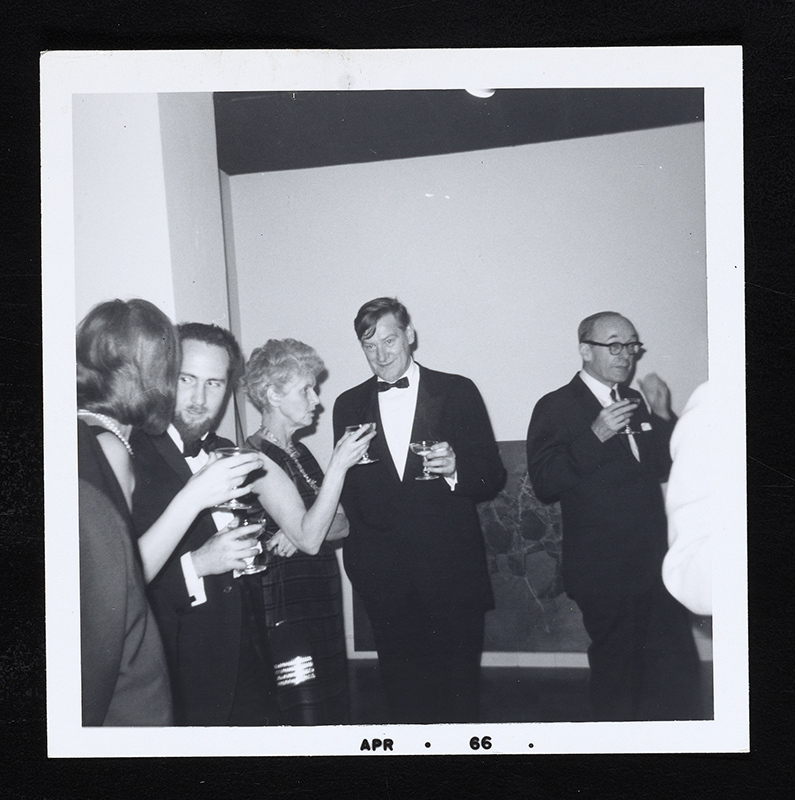
John Bernard Myers attending the opening of the Homage to Machado, Tibor de Nagy Gallery records, 1941-2016. Archives of American Art, Smithsonian Institution.
Less than two months passed between 20 February, the date the event in Baeza was broken up, and the exhibition opening in New York on 14 April. During that time Myers designed and organised the exhibition alongside Frank O’Hara, who curated New Spanish Painting and Sculpture, the first major exhibition of Spanish art in the United States, held at MoMA in 1960. The artists selected to take part in this homage were no strangers to the country: Pepe Dámaso, Francisco Farreras, Antonio López, César Manrique, Manuel Millares, Lucio Muñoz, Manuel Rivera, Antonio Saura, Eusebio Sempere, Antoni Tàpies and Fernando Zóbel featured in the initial, but not definitive, line-up of proposed artists for Homage to Machado. But were the visual arts to be the only protagonists at the celebration? In commemoration of a poet, and organised by Myers and O’Hara, poets themselves, it was only fitting that literature should also play a significant role. And it was certainly present, although to a lesser degree. While the gallery owner had initially thought about holding a symposium on Spanish literature and thinking,9 considering figures such as Ramón J. Sender, José Luis L. Aranguren, Severo Ochoa and Juan Marichal, the literary part o Homage to Machado only materialised in a short leaflet. Its cover page merely mentioned the date and venue of the homage as well as the list of participating artists. More than anything else it was a literary publication, solely and exclusively dedicated to Little Elegy for Antonio Machado, the poem O’Hara dedicated to the Seville-born poet, written specifically for the occasion, and which became valuable shortly afterwards since it was the last piece the American poet wrote before suddenly passing away some weeks later.
The date chosen for the première, 14 April, was symbolically coinciding with the proclamation of the Second Spanish Republic. Some artists had pulled out and others had joined the list of participants. Juana Francés and Pablo Serrano, the sculptor behind the Machado monument that he was unable to unveil in Baeza, joined the artists on the original list proposed by Myers, but eventually pulled out. These absences were not merely anecdotal, but decisions apparently based on the ideology behind the homage, which Myers did not see as such, as can be read in his correspondence to Juana Mordó, a Spanish gallerist with connections to some of the artists:
The Farreras and Manrique refusals were based upon a fear of being involved with an exhibition which had a political purpose, even though I explained that the motive was purely humanitarian and that The Spanish Refugee Aid, Inc. is a tax-exempt, non-political organization.10
Something similar happened with Fernando Zóbel, who also disagreed with the recurring use of Machado’s figure, as he mentioned to Myers:
I hope you achieved the non-political tone you desired. I often think that Machado would disapprove of the uses made of his name. The poor man, after all, was a poet. Why don’t people read him instead of unveiling statues every six months? Have you tried talking to people about his poetry? I would dislike becoming a political football after I am dead.11
Although Myers did not consider it as such, the truth of the matter is that the political nature was rather intrinsic to this exhibition given that it was created in response to Franco regime’s censorship and its purpose was to raise funds to support Spanish refugees in France. The exhibition also allowed the SRA to spread the word about its mission, and, more importantly, to raise funds to finance their humanitarian aid projects. Funds were raised through Homage to Machado by selling part of the exhibited work, by donations from attendees and the sale of tickets for the inauguration. In addition to involvement by individual Spanish artists, the New York galleries that represented them in the United States joined the cause and decided to take part in the homage. These galleries were well-needed allies for the exhibition to really take off. They did so through loaning pieces for the exhibition and by setting aside a percentage of the profits from sales to be donated to the SRA.12
Homage to Machado brought together some of the most important New York galleries, such as the Pierre Matisse, the Martha Jackson, the Staemplfi or the Bertha Schaefer Galleries. An exception to the names on this list was the painter Juana Francés, who, apart from being the only woman to take part in the homage, was also the only artist not represented by a gallery in the United States. Eventually, it was the American art collector Amos Cahan who supplied the painting that she showed at the exhibition.
A total of forty pieces of work were loaned to the SRA, all of them recent, of which a selection of thirty pieces was exhibited. Those originating from private collections were not for sale; the only ones sold at the exhibition were Sketch VI by Lucio Muñoz and White Space by Antonio Tàpies, purchased by Gustave P. Heller and Amos Cahan respectively. The meagre funds generated from these sales were offset off by other earnings, meaning the SRA made a total profit of $1,253.13
From a strictly commercial point of view, the exhibition was clearly unsuccessful in terms of sales for the SRA. However, what could have been a setback did not diminish its true underlying value. Today, there are two salient characteristics of the event that can be observed. The first is how Homage to Machado was an example of the power of citizen activism. That was proven by Macdonald, as a founder of the SRA, and by Myers, as an organiser of this exhibition. It was also proven by the artists and galleries, key stakeholders in the art scene that got involved to make the event possible. The second reflection is that Homage to Machado is a reminder of the roles that the West played regarding the refugee problem in the 1930s and 1940s. With La Retirada, Europe saw the first major refugee crisis on the continent, at the same time as Jewish people started to flee Europe from 1938 onwards. The huge influx of refugees caused apprehension and rejection in the states the refugees had fled to. Today, in the early decades of the 21st century, there is a remarkably similar panorama. We have all seen the images of people trying to reach Europe, portraits of despair that hark back to the different refugee crises of the 20th century across our continent, whose memories are preserved in black and white and are all too similar to the photographs we have been confronted with during the opening decades of this new century. Are we condemned to stand by and watch history repeat itself? Once again, the reactions are ones of fear, rejection and governmental inactivity. However, the proliferation of NGOs, in part supported by professionals cooperating as volunteers, proves that a different outcome is something that lies within our reach: our desire to change it.
Editor: Vincent Simon
Translated from Spanish by Maud Di Credico (Acantho)
Cover: Painting from Juana Frances featured in the Homage to Machado. Juana Frances, untitled, 1964, mixed media (acrylic on metal and sand) sur toile, 117 x 168 cm, Banca March Collection.
